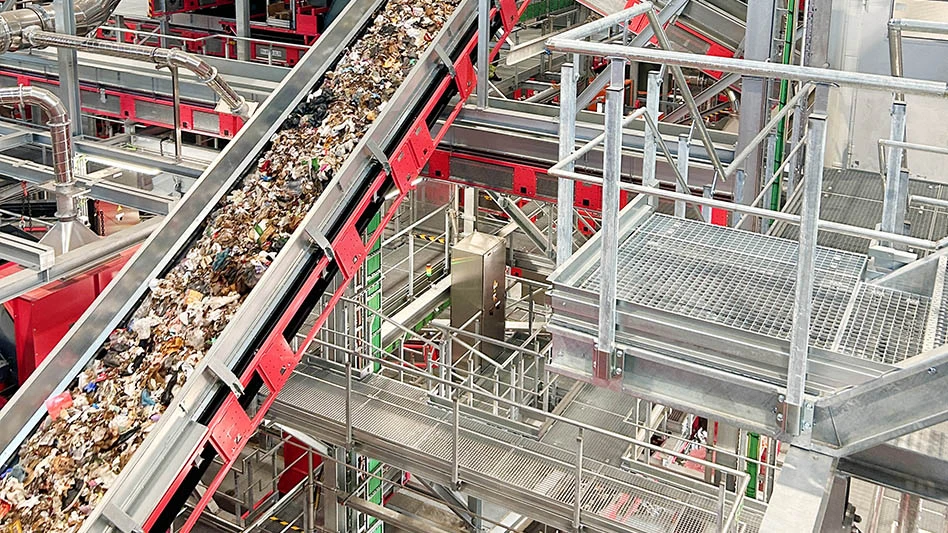
 A broad range of lifting and materials handling technologies specifically designed for waste to energy (WTE) and biomass applications is being introduced to Southeast Asia by Konecranes, with U.S. headquarters in Springfield, Ohio, as the region develops its bioenergy potential.
A broad range of lifting and materials handling technologies specifically designed for waste to energy (WTE) and biomass applications is being introduced to Southeast Asia by Konecranes, with U.S. headquarters in Springfield, Ohio, as the region develops its bioenergy potential.
Remote Operation
Konecranes offers a remote operating station (ROS) that allows someone to operate the crane via cameras from a central operations room located in the facility. This ROS ensures all personnel are removed from harm’s way, the company says.
Konecranes WTE crane technology
Konecranes biomass handling cranes are designed to automatically start the working cycle to transfer the material from the reception pocket to the adjacent storage. Likewise, the crane automatically starts the working cycle to fill the hopper from the storage after it receives the command “fill the hopper” from the sensor.
The storage is managed by the crane. Every time crane deposits or picks up material, it updates the storage in that coordinate location, the company says. The same modular solutions used in Konecranes WTE cranes are applicable to biomass handling cranes.
Konecranes refuse handling cranes are designed to meet the demanding loads of waste management plants. Components like hoisting trolleys, drives and grapples have been engineered to reduce maintenance requirements, according to the company.
Each crane features Konecranes’ advanced integrated rope/cable drum. The vertical power cable for the bucket is wound onto the rope drum and is driven by the hoisting machinery.
Konecranes proprietary smart features are designed to manage critical crane functions to reduce structural stress, increase efficiency and prolong equipment life.
Sway control is designed to minimizes load sway from bridge and trolley motions, reducing collisions between the grab and the pit walls or hopper, as well as preventing equipment damage.
Konecranes specialized WTE technologies
Konecranes ash (or slag) handling cranes are designed for harsh environments. These cranes are used to distribute slag under the conveyor line to the other areas in the slag bunker 24 hours a day as well as loading trucks during the daytime. Sometimes the ferrous rejects have not been separated from the slag, causing higher requirements for the buckets.
To achieve better penetration into the slag, the edges of claws can be provided with special teeth.
The Konecranes main user interface (MUI) is Konecranes’ new standard solution for programming WTE automation. Accessed from the MUI station, the MUI features a computer and 23-inch LED panel screen, keyboard and mouse.
This computer is fully integrated with the crane’s PLC system, while isolated from outside networks. It’s designed to allow the operator to schedule and program a week-long agenda that includes up to 20 different work routines in full automation, giving plant managers enhanced flexibility to manage pit operations for receiving, mixing and burning waste.
In addition, the MUI monitors crane operations, including usage statistics, error messages and equipment condition. The system also generates summary reports to help managers optimize maintenance and alert them if more operator training is needed.
Latest from Waste Today
- US Senate backs reduced cuts to EPA
- ELV Select Equipment, Reworld aid NYPD in secure firearm disposal
- Waste Connections announces Q2 results
- Returnity and Cosmoprof to address reusable bag waste
- SWANA releases report on aging WTE facilities
- New economic assessment reveals cost benefits of California’s SB 54
- Premier Truck Sales & Rental opens new facility
- TeknTrash Robotics, Sharp Group partner on humanoid robot pilot





